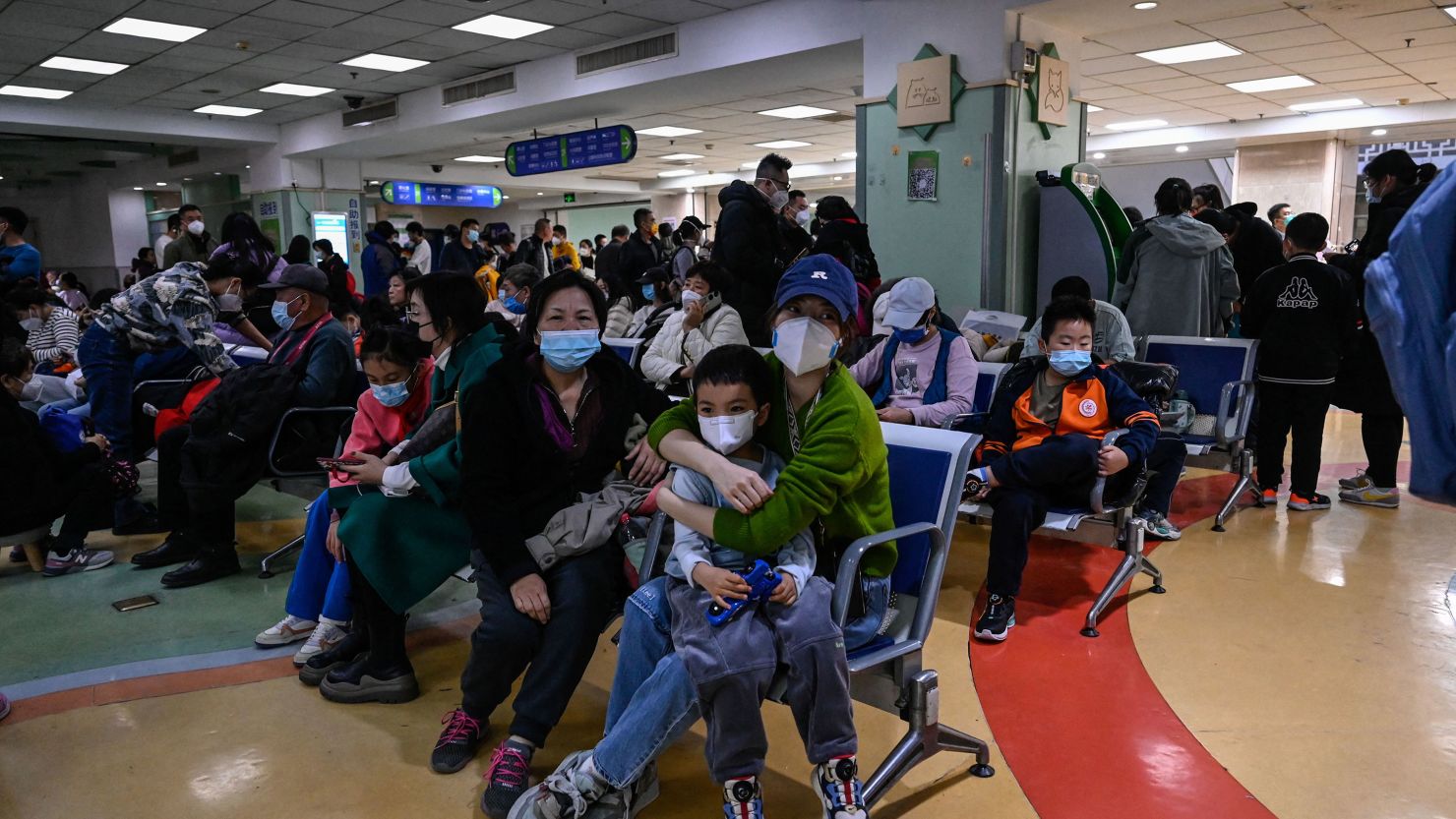Chinese health authorities told the World Health Organization on Thursday that a spike in cases of children with pneumonia or respiratory illness in the northern part of the country stems from typical seasonal germs rather than any novel or unknown pathogen, the organization said.
After asking for more information from China on Wednesday about the increase in pediatric disease, WHO held a teleconference with leaders from the Chinese Center for Disease Control and Prevention and the Beijing Children’s Hospital at which those officials shared the requested details, the organization said in a statement.
The Chinese officials said that they have seen an increase in the number of sick kids seeing doctors or being hospitalized for Mycoplasma pneumoniae pneumonia, a common infection that often affects younger children. It can be treated with antibiotics.
Since October, doctor visits and hospitalizations are also up for RSV, adenovirus and the flu, the officials said. Some of those increases are a little earlier than usual, but WHO said they were “not unexpected.”
Similar early surges in respiratory illnesses were seen in other countries after Covid-19 restrictions were lifted.
Scientists think restrictions created a kind of “immunity gap” that made people more vulnerable to infection when they stopped taking precautions. That’s what happened last fall in the United States, with an early surge in RSV cases among kids.
China’s zero-Covid policy, which mandated strict lockdowns and quarantines along with mass testing and rigorous contact-tracing, ended in December.
At Thursday’s teleconference, WHO said, the Chinese officials reported enhanced surveillance of respiratory illnesses that may be contributing to increases in reported cases of disease.
WHO said Chinese officials reported that there have been no changes in the kinds of symptoms people were experiencing to indicate that these illnesses were anything different from the viral and bacterial respiratory infections that arrive with every winter.
Even with the spike in cases, China also said that its hospitals are not overwhelmed with patients.
WHO has been monitoring data from Chinese surveillance systems since mid-October, when it initially noted an increase in respiratory illnesses in children in northern China.
Media reports suggested that there was a “widespread outbreak of an undiagnosed respiratory illness in several areas in China,” according to the International Society for Infectious Diseases’ Program for Monitoring Emerging Diseases, known as ProMED. “It is not at all clear when this outbreak started as it would be unusual for so many children to be affected so quickly,” but reports of illness predominantly in children suggest “some exposure at the schools.”
Get CNN Health's weekly newsletter
- Sign up here to get The Results Are In with Dr. Sanjay Gupta every Friday from the CNN Health team.
During this rise in respiratory illnesses, WHO is advising people in China to do what they can to reduce the spread of infectious disease, including staying home when they are sick, wearing a mask when it is appropriate and using good hand hygiene.
WHO is not recommending that travelers change their plans or take any particular precautions when visiting China, other than to avoid travel if they are sick.
WHO said it will continue to closely monitor the situation, stay in close contact with national authorities in China and provide updates when appropriate.
CNN’s Katherine Dillinger contributed to this report.


